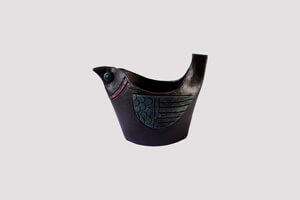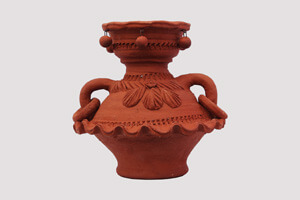Pottery / Terracotta

Terracotta is a term usually used for defining sculptures which are made in earthenware, and also those forms created for various utilitarian purposes like vessels, flower pots, bricks, and surface embellishments in buildings. Terracotta in Italian language means "baked earth". It is type of earthenware, which is either clay-based unglazed or glazed form of ceramic.
Terracotta has been in existence for a very long time. In fact, it is believed to be the only clay product which was used until 14th century. Archaeologists have found many terracotta sculptures, which are more than 5,000 years old. The major step in making Pottery involves collecting appropriate refined clay, to get the desired shape. After drying, the clay is placed in a kiln or on the top of combustible material located in a pit, and it is then fired. The temperature of the fire should be around 1,000 °C and during this process, the iron reacts with oxygen which results in a fired body or reddish color. The pottery created with terracotta is used as garden pots or for decorative purposes in many environments, as well as oil lamps, or ovens.
In Andhra Pradesh, Palamaner Mandal in Chittoor District is renowned all over for its most attractive and varied Terracotta Pottery. There are more than 20 small open-air outlets existing here alongside the highway, where dozens of artisans display their work. The locally available mud/clay is considered suitable for pottery work. They create an array of craft products like lamps, pots, musical instruments, flower vases, horses, idols, plates, elephants, and other highly attractive artefacts.
Designer Products
Designer : Rajesh Surniganti | Workshop : Madanapalle
Traditional Products
































